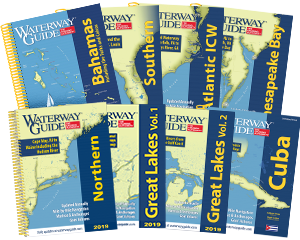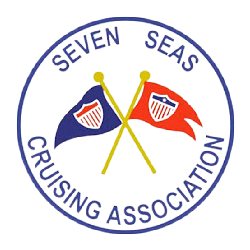The Pamlico River is wide and easily navigable to Washington, NC, where the Pamlico River becomes the Tar River. This wide, beautiful river is lined with wooded banks and one industrial site–a phosphate mine on the south side of the river a little more than 10 miles from the ICW.
If you are southbound, the entrance to the Pamlico River from the ICW is around the junction flashing red (2+1) "PR" (Mile 146) marking the shoal off Wades Point at the mouth of the Pungo River. Do not attempt to cut inside the marker unless you are very familiar with the area. Take care not to hit the unmarked, unlighted Mile 145 marker on the east side of the Pungo River prior to Wades Point.
South Creek
South Creek lies just west of the small charted Pamlico River - Indian Island on the south shore of the Pamlico River. Deep and well marked all the way to the town of Aurora, this is an excellent creek for exploration or anchorage, but be aware that there are no facilities for transient boaters. Dinghies can tie to the former town docks, which are now leased by North Carolina Fish and Wildlife.
When approaching Aurora the channel narrows and depths shoal to 5 to 7 feet MLW. Follow the daybeacons carefully and save any shallow-water exploration for your dinghy.
North Creek
Just off the north side of the Pamlico River and directly across from South Creek is peaceful North Creek. About 6 miles to the east is the ICW, running across the mouth of the Pamlico Sound. About 25 minutes to the west is Washington, NC, where you will find many marine supply stores to meet your boating needs.
It can be difficult to spot the entrance to North Creek but once inside, the channel is well marked. Proceed about 0.5 miles up North Creek, turning into the western branch (Ashon Gut) at red daybeacon "4" to reach the marine facilities. For more information on entering North Creek, refer to Chapter 4 of the Mid-Atlantic Waterway Guide.
Bath Creek
The waterfront at the little historic town of Bath on the north shore of the Pamlico River is well worth a visit, especially if you are a history buff. Founded in 1696 and established in 1705 it is listed as the oldest town in North Carolina. Bath's most notorious citizen was Edward Teach, also known as Blackbeard (the pirate). Standing in front of the historic Bonner House and looking south across the bay it is easy to see why Blackbeard selected Bath and Plum Point as his base of operation: privacy. That much has not changed. You can find information about Blackbeard and Bath at the Historic Bath Visitor Center (252-923-3971) between Main St. and Harding St. just one block from the water.
You can set a northerly course into Bath Creek beyond the ferry crossing and 3 miles northwest of flashing red "4" off Gum Point. Avoid the fish stakes at the entrance and be wary of any possible submerged pilings after clearing flashing green "1" at the entrance. The harbor is easy to enter if you mind the NOAA chart and watch out for the crab pots around flashing green "1" and red daybeacon "2" (Archbell and Plum Points).
Broad Creek
Broad Creek is 7 miles to the west of Bath. Several hundred sail and powerboats make Broad Creek their home port and it is the main boating center for Washington located 7 miles farther to the north-northwest.
Broad Creek's entrance is well marked and easy to negotiate from the east. Steer in a northwesterly direction from flashing green "7" (in the main Pamlico River channel off Maules Point) until flashing green "1" is visible to the north and then follow the Broad Creek channel to green daybeacon "3" and flashing red "4." Note the spoil areas south of the entrance. If coming from the west steer east past the red daybeacon "8" before turning north then turn northwest once on a line between flashing green "7" in the main channel and flashing green "1" in the Broad Creek channel. There is no room for anchoring in this small harbor.
Washington
This small community of just under 10,000 residents has a maritime culture all its own with dozens of colorful crab statues lining the downtown streets, hundreds of boats–both big and small–lining the waterfront and miles of open Tar and Pamlico River views extending in virtually every direction. Here you will find a sprawling waterfront with stores, businesses and the historic haunts of pirates.
Learn more about this Preferred Destination, here.
The NOAA chart shows plenty of water in the Pamlico River even outside the channel until flashing red "14." From here markers "16," "17," "18" and "19" lead to the Norfolk Southern Railroad Bridge. The bridge has 7-foot closed vertical clearance and is usually open; however, it may be closed between 7:30 a.m. and 10:30 a.m. on weekdays and Saturday. Past the bridge is the Washington riverfront located to starboard before the US 17 Business Bridge (6-foot closed vertical clearance), which will open with 24-hour notice. This bridge marks the confluence of the Pamlico River and the Tar River and the river actually changes names at this point. When approaching the town keep Castle Island to port and stay within the 9-foot MLW channel.












